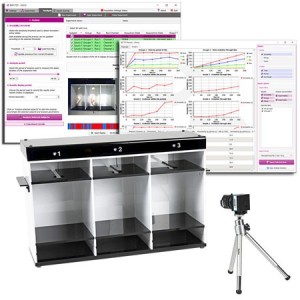Authors
P.-H. Cheng, C.-H. Li, L.-S. Her, Y.-F. Chang, A. Chan et al.
Lab
National Cheng Kung University, College of Medicine, Department of Physiology, Tainan, Taiwan.
Journal
Brain Structure and Fonction
Abstract
Huntington's disease (HD) is a genetically neurodegenerative disease, affecting the central nervous system and leading to mental and motor dysfunctions. To date, there is no cure for HD; as a result, HD patients gradually suffer devastating symptoms, such as chorea, weight loss, depression and mood swings, until death. According to previous studies, the exon 1 region of the huntingtin (HTT) gene with expanded CAG trinucleotide repeats plays a critical role in causing HD. In vitro studies using exon 1 of HTT fused with green fluorescent protein (GFP) gene have facilitated discovering several mechanisms of HD. However, whether this chimera construct exerts similar functions in vivo is still not clear. Here, we report the generation of transgenic mice carrying GFP fused with mutant HTT exon 1 containing 84 CAG trinucleotide repeats, and the evaluation of phenotypes via molecular, neuropathological and behavioral analyses. Results show that these transgenic mice not only displayed neuropathological characteristics, observed either by green fluorescent signals or by immunohistochemical staining, but also progressively developed pathological and behavioral symptoms of HD. Most interestingly, these transgenic mice showed significantly differential expression levels of nuclear aggregates between cortex and striatum regions, highly mimicking selective expression of mutant HTT in HD patients. To the best of our knowledge, this is the first report showing different nuclear diffusion profiling in mouse models with transgenic mice carrying the exon 1 region of mutant HTT. Our model will be beneficial for tracing the expression of mutant HTT and accelerating the understanding of selective pathological progression in HD.
BIOSEB Instruments Used
Tail Suspension Test - Wireless (BIO-TST5)
Source :

 Douleur - Allodynie/Hyperalgésie Thermique
Douleur - Allodynie/Hyperalgésie Thermique Douleur - Spontanée - Déficit de Posture
Douleur - Spontanée - Déficit de Posture Douleur - Allodynie/Hyperalgésie Mécanique
Douleur - Allodynie/Hyperalgésie Mécanique Apprentissage/Mémoire - Attention - Addiction
Apprentissage/Mémoire - Attention - Addiction Physiologie & Recherche Respiratoire
Physiologie & Recherche Respiratoire




































 Douleur
Douleur Système Nerveux Central (SNC)
Système Nerveux Central (SNC)  Neurodégénérescence
Neurodégénérescence Système sensoriel
Système sensoriel Système moteur
Système moteur Troubles de l'humeur
Troubles de l'humeur Autres pathologies
Autres pathologies Système musculaire
Système musculaire Articulations
Articulations Métabolisme
Métabolisme Thématiques transversales
Thématiques transversales Congrès & Meetings
Congrès & Meetings 